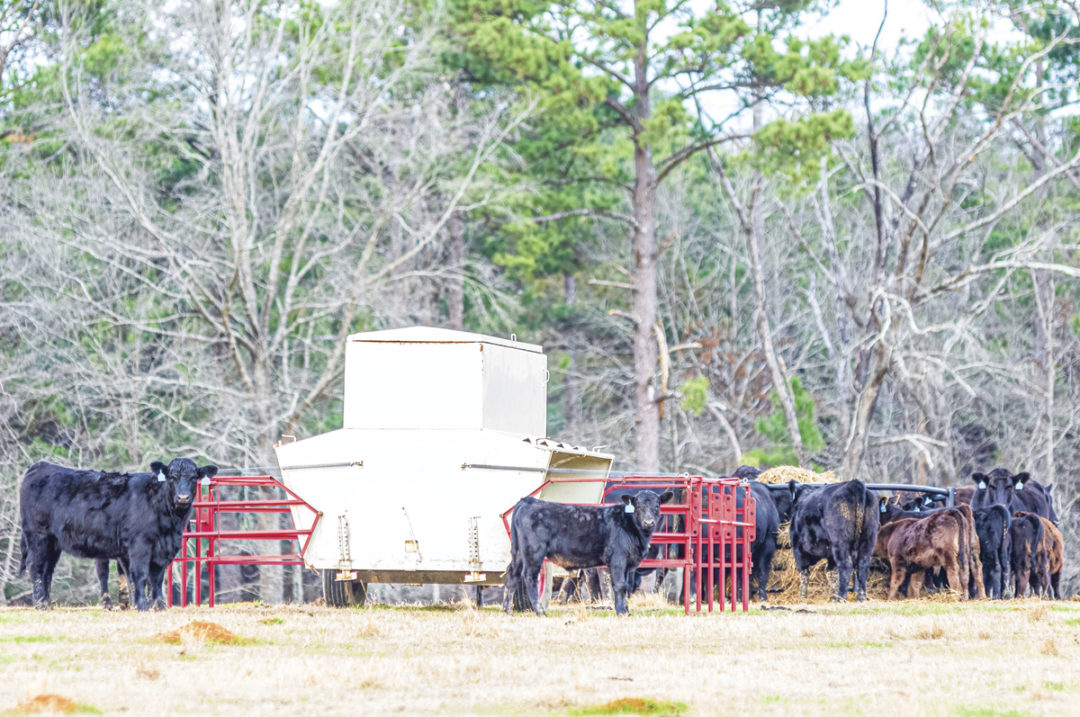Beef producers continually search for ways to improve their operations and bottom lines. One tool worthy of consideration is creep feeding calves. Creep feeding can be a good way to increase calf weaning weights beyond what mother’s milk and available forage can produce.
However, the benefits reach well beyond heavier weaning weights. Creep feeding can also aid in helping to smooth the weaning process. It allows calves to wean more easily, get on feed faster and (hopefully) have fewer health issues. While there is an obvious cost to creep feeding, each producer must weigh the advantages versus the added cost to determine what makes the most sense for their operation.
Increase weaning weight
According to the Journal of Dairy Science, the rumen makes up approximately 85% of the total capacity of the stomach complex in mature cattle. For the newborn calf, however, the rumen is underdeveloped and only accounts for approximately 35% of the total capacity. As a result, the rumen must undergo substantial developmental changes to store and digest feed in a manner similar to that of mature cattle. Thankfully, exposure to creep feed helps accelerate rumen development. Some volatile fatty acids (VFAs), such as butyrate and propionate, are produced at a higher level in calves consuming nutrient-dense creep feeds. In turn, these VFAs help stimulate blood flow to the rumen and overall rumen development. The additional nutrients provided in the creep and improved rumen efficiency – a result of a more developed rumen – produce heavier calves at weaning.
One should also pay attention to the milking ability of the cows when deciding to creep feed. However, this is a surprisingly complex issue. When we discuss milking ability, there are a lot of factors that come into play, both genetic and environmental. Obviously, some breeds – and even specific animals within a breed – have different milk production capabilities. However, the available feed can also impact milk production. For example, inadequate or poor-quality forage (perhaps due to drought, seasonality, soil conditions, etc.) can decrease the nutrients that a cow puts toward milk production. In this case, creep feeding can be especially useful for calves that may not be getting their nutrient needs met from their mother’s milk or available forage alone.
It’s also a good idea to include a postbiotic feed additive in the creep feed to help support robust digestive health by balancing rumen microbiota and aiding in rumen development. A recent study conducted at Iowa State University showed that calves supplemented with a postbiotic had improved rumen development, as indicated by longer, more developed rumen papillae, as opposed to calves not supplemented with the postbiotic.


Decrease weaning stress
As all cattle producers recognize, the weaning process can be very stressful on calves, especially those that have never consumed any sort of dry feed from a bunk. Calves that are accustomed to consuming creep feed often seem to take the weaning process easier. They are more used to eating feed from a bunk, which, in turn, provides more energy, protein and other nutrients to the animal during this crucial time when calves are most at risk. Consequently, calves that have previously had creep may have a stronger immune system that is better able to fight off sickness. The addition of a postbiotic feed additive prior to and during weaning can also aid in supporting immune strength to prime the immune system to respond more quickly and robustly if faced with health challenges. Not only are calves less likely to break with sickness, but if they do, they tend to respond better to antibiotic treatment.
In summary, creep feeding calves not only aids in rumen development and allows for heavier calves at weaning, but also helps to minimize the stress that comes along with the weaning process. Reducing stress can help decrease sickness, reduce treatment costs and boost cattle performance post-weaning. Including a postbiotic feed additive can help calves better respond when stress comes their way. Plus, postbiotics are all-natural products, meaning we can use them in both conventional and all-natural programs.








